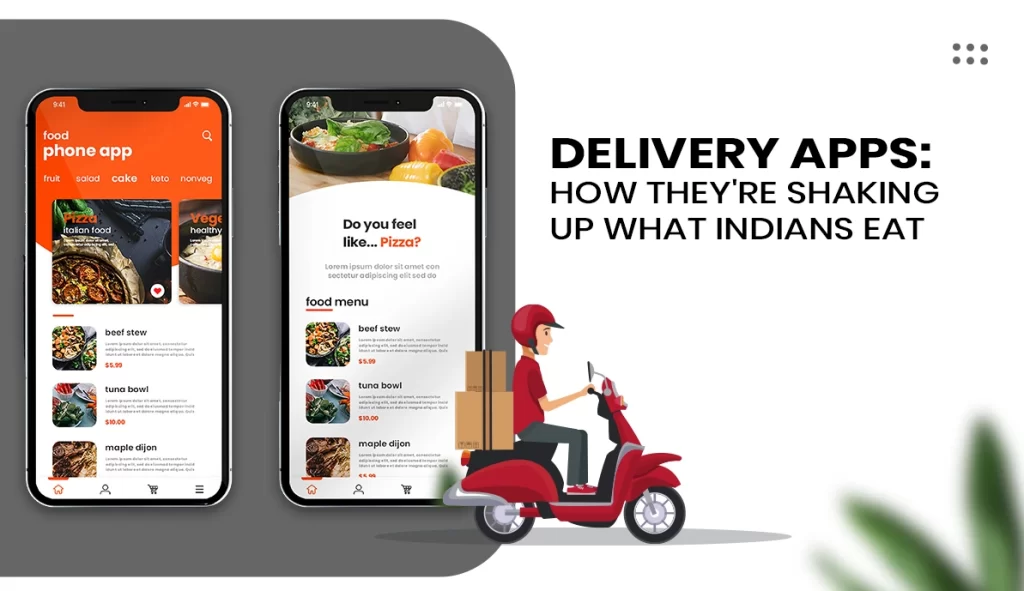
There is no sincerer love than the true love for food. This love has fueled the metamorphosis of the restaurant industry into “Foods on Wheels.”
Therefore, from dining out to ordering in, there has been a gradual shift in the overall food business. According to a recent report, the Indian food delivery global market experienced a 30% surge between 2015 and 2016.
Eminent start-ups like the Curry Courtyard from Albus Hospitality Services have fruitfully bridged the gap between restaurants and the lazy consumers.
The report suggests that these major online food delivery players have handled an average of 160,000 orders daily since 2016. According to a Bloomberg report, over 400 food delivery apps have been operational across India since 2013. It raised approximately USD 120 billion in funds.
Perceptible Effects of the Food Delivery Start-ups within India
These are the perceptible effects of the food delivery start-ups within India.
Competitive Vendor Landscape
Furthermore, the global online on-demand delivery market seemed highly competitive. There are a few major players and several small to mid-size vendors. One of the most renowned players appeared to be that of the Curry Courtyard. There are also other vendors, such as Swiggy and Zomato, in the market. However, we are very competitive in terms of our service offerings. These major vendors have contributed approximately 10-12% of the world’s revenue to date. Convenience and easy accessibility appear to be the critical factors driving the global online on-demand delivery market. Therefore, the demand for online on-demand food delivery services is increasing due to the growing preference for convenience and easy access to food delivery.
Error-free customization of orders
Within an online process, the customer selects items from the menu, provides any necessary additional details, and places the order. Without any hassle, the order is typically placed within the Indian food delivery global network and processed by the restaurant seamlessly.
In addition to being efficient and straightforward, it also provides a good takeout experience. As the ordering of food is automated through an online ordering system, customers never have to worry about miscommunication either.
Integrated Point of Sale system:
However, the Point of Sale is basically the time and place where a retail transaction is completed. At the POS, it is the merchant who calculates the amount owed by the customer, indicates that through this amount, you might prepare an invoice for both the customers, and shows the options for the client and indicates the options for the customers to make the payment.
Since very few systems are uniform across all the chain restaurant locations, several franchises struggle with implementing new promotions into their POS systems.
It is an online ordering system situated above the POS, which can seamlessly integrate with multiple POS providers. For franchise restaurant locations and for other widespread businesses, this is a fantastic feature.
Positive Customer Service
Within the curry courtyard, customers can quickly order or take a considerable amount of time to make a decision.
No longer is it an issue for the restaurants. Switching the focus from offline ordering to online ordering definitely means less hassle for handling undecided calling clients and the staff time lost in the process.
It is much easier and considerably cheaper to create and maintain a superb menu that will attract the attention of customers and let them order from the restaurant every time they see it.
Better Marketing ROI:
Online delivery is a competitive market, as once customers sign up, 80% of them never leave the website, creating a huge winner-take-all dynamic. This dynamic rewards the player who can sign up the most customers in the shortest amount of time. The Curry Courtyard, being a reputed online Indian food delivery service provider, aims to retain customers through integrated loyalty programs, including sending customized SMS and emails, as well as reward points.
However, by analysing the customer data, it facilitates the provision of more targeted services. It aids in growing their business and driving huge revenue.
Revenues
Due to the rise of Indian food delivery globally, online food orders now account for approximately 4% of total food sold through restaurants and fast food chains, with an expected annual growth rate of around 3.5%.
Concluding Thought
In conclusion, it is evident that the entire process is fully automated, with minimal manpower required, and this automation leads to better sales returns. As a 24/7 operating business, an online food delivery system enables the owner to earn money even when they aren’t actively working.